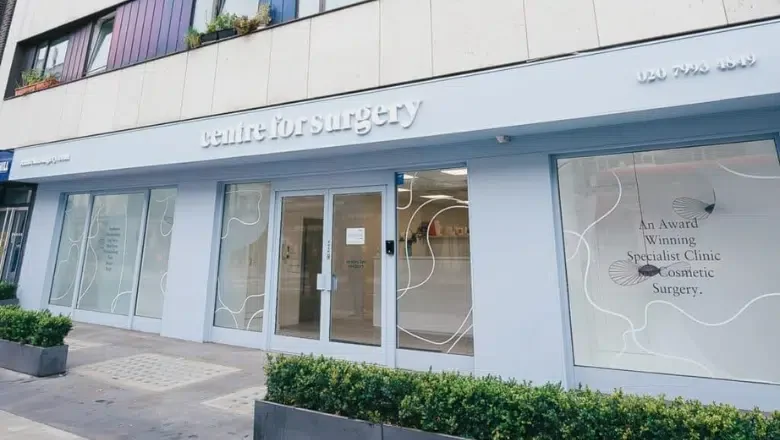What is an endoscopic brow lift?
An endoscopic brow lift, also known as an endoscopic forehead lift, is designed to lift the position of a sagging brow that may contribute to the appearance of hooded eyes. The procedure is commonly combined with eyelid surgery for comprehensive facial rejuvenation. Patients who are more concerned about the sagging of the eyebrows in the outer third may be more appropriate for a temporal brow lift, also known as a temporal lift.
RELATED: What is a Brow Lift?
Everyone ages at a different rate, but the ageing process eventually leads to characteristic facial features, which may prompt people to seek medical attention. The upper third of the face, including the brow area, is often the first part of the face to show signs of facial ageing. Although people may feel young at heart, certain signs of facial ageing often reveal their actual age. The speed at which several factors, including genetics, lifestyle habits and excessive sun exposure, determine our age. This can result in people looking much older than they actually are. Endoscopic brow lift surgery is a minimally invasive technique to address facial ageing affecting the upper one-third of the face. Synergistic results are obtained when the procedure is combined with eyelid surgery, facelift, neck lift or facial fat transfer. Standard features of facial ageing include a descended or droopy brow, deeper lines and wrinkles affecting the forehead and eyes, sagging jowls and loose neck skin.
RELATED: Exploring the Gliding Brow Lift: A Revolutionary Approach to Forehead Rejuvenation
What are the benefits of an endoscopic forehead lift?
A drooping brow can result in excessive fullness or puffiness of the upper eyelids and the brow area, which lies immediately above the eye. In severe cases, the brow may droop so low that it causes upper eyelid hooding, resulting in significant visual disturbances.
RELATED: Blepharoplasty vs Brow Lift – Which One Is Right For Me?
Endoscopic brow lifts can enhance the structural relationship between the brows and the upper eyelids, resulting in improved facial balance. Endoscopic brow lift surgery has gained popularity in recent years. It has superseded traditional methods of brow lift surgery, including the coronal brow lift, which involves a long incision across the upper part of the forehead. There are now several alternatives to brow lift procedures. However, for suitable patients, this procedure is ideal for enhancing the youthfulness of the upper face and reducing signs of upper facial ageing.
RELATED: Benefits of Brow Lift Surgery
Am I suitable?
Ideal candidates for endoscopic browlift surgery are those who are unhappy with the appearance of the upper part of their face. In particular, people with an excessively low brow that may appear droopy or asymmetrical can benefit significantly from the procedure. Prospective patients should have good physical and mental health and realistic expectations of what the procedure can achieve. Ideally, they should have good-quality skin by avoiding excessive sun exposure and refraining from smoking to reduce the risk of wound healing complications.
RELATED: Eyelid Surgery, Brow Lift or Injections?
It is essential to note that brow asymmetry is commonly observed in the general population, although it may worsen with age. Although endoscopic brow lift surgery can help improve asymmetrical brows, a certain degree of asymmetry will always remain, even after surgery. No face is perfectly symmetrical and will appear slightly different when viewed from each side. At your consultation, your surgeon can provide further detailed advice on how you could potentially look after surgery after carrying out a thorough physical examination to assess your anatomy and skin quality.
Endoscopic brow lift procedure
Endoscopic browlifts are performed as outpatient procedures at our state-of-the-art clinic on Baker Street in central London. This means you can go home later the same day.
Surgery is carried out under a general anaesthetic for your complete comfort, and the procedure takes between one and two hours, depending on the extent of surgical correction required. Surgery may take longer if combined with other complementary procedures, such as blepharoplasty surgery or a mini facelift. The procedure is always customised to the individual patient’s needs. The following surgical steps provide a more comprehensive overview of the procedure. Still, we recommend learning about the procedure in detail by asking your surgeon during the consultation about the exact approach that will be used in your surgery.
The surgeon will make small incisions in the hair-bearing scalp to allow access for inserting a miniature camera, also known as an endoscope. The endoscope is combined with specialised instruments to gently separate the skin of the forehead from the underlying tissues down to the level of the bone. Once the skin of the forehead and eyebrows has been surgically lifted, it will be secured in its new position with specialised bone anchors to secure the lifted brow in its new position. The anchoring stitches will eventually dissolve, a regular part of the healing and recovery process. In some cases, your surgeon may secure the lifted tissue with a specialised tissue fixation system. Your in-person consultation is the perfect opportunity to discuss the full range of brow fixation options.
RELATED: Endotine Forehead Lift
Will I need eyelid surgery after having a brow lift?
Once a brow lift has been carried out, the position of the upper eyelids may be lifted sufficiently to remove the need for upper eyelid surgery. In many cases, patients will have sagging skin affecting the eyelids, and upper blepharoplasty should be performed in conjunction with the endoscopic brow lift during the same procedure. The brow lift is always performed first to ensure the brows are in an optimal position.
Recovery after endoscopic brow lift surgery
After an endoscopic forehead lift, recovery is considered fairly quick and smooth, provided you follow your surgeon’s post-operative instructions in full. Once the procedure is complete, sterile dressings will be applied to your head. These are commonly removed one week after surgery. It is expected to notice swelling and bruising around the incision site, which will begin to disappear after two weeks. Most patients can return to work after a few days, although it’s best to take it easy during recovery and avoid doing too much too soon. Strenuous exercise, including going to the gym, should be avoided for at least two weeks. We recommend sleeping with your head elevated on a couple of pillows to help reduce surgical swelling. This will help your recovery and prevent complications from occurring.
How much does an endoscopic brow lift cost?
The cost of an endoscopic brow lift will be determined by the extent of surgical correction required to achieve eyebrow lifting and whether the procedure will be combined with other treatments, such as eyelid surgery or a facelift. Brow lift prices include your surgeon’s fee, anaesthetist’s fee and facility fee. All postoperative aftercare visits are included in the total cost of your procedure. Once you have had a face-to-face consultation with your surgeon, your dedicated patient coordinator will provide you with a comprehensive quotation detailing the costs associated with the endoscopic brow lift surgery. Centre for Surgery is an approved partner of Chrysalis Finance, the leading medical finance provider in the UK. We offer a full range of finance options, including 0% finance for eligible applicants to help spread the cost of repayments.
RELATED: Finance Options
Medical References
Why choose Centre for Surgery for endoscopic brow lift surgery?
Centre for Surgery in London is one of the few cosmetic surgery clinics in the UK to specialise in endoscopic brow lift surgery, which is considered one of the most advanced techniques for lifting a sagging or drooping brow. Our consultant plastic surgeons have extensive experience performing precision facial rejuvenation surgery, including eyelid surgery, facelift surgery, and facial fat transfer. Contact us today at 020 7993 4849 to arrange a personal consultation with an expert plastic surgeon at our state-of-the-art clinic on Baker Street in Marylebone.
FAQs
-
What are the benefits of an endoscopic brow lift?An endoscopic brow lift is a less invasive procedure that uses small incisions and an endoscope, a small camera attached to a thin tube, to lift and reposition the tissues of the forehead and eyebrows. Some of the benefits of an endoscopic brow lift include:
Minimal scarring: The small incisions made during an endoscopic brow lift are usually less than an inch long and are hidden within the hairline. This means that scarring is minimal and is generally not visible.
Faster recovery: Since the incisions are small, the recovery time is usually shorter than a traditional brow lift. Patients can generally return to their daily activities within a week or two after the procedure.
Reduced risk of complications: An endoscopic brow lift is a minimally invasive procedure that involves less trauma to the tissues than a traditional brow lift, which can reduce the risk of complications such as bleeding, infection, and nerve damage.
Natural-looking results: Using an endoscope allows the surgeon to visualise and lift the tissues of the forehead and eyebrows in a precise and controlled manner, resulting in natural-looking, youthful results.
Versatility: An endoscopic brow lift can be customised to suit each patient's specific needs. The surgeon can adjust the extent and direction of the lift to achieve the desired level of correction and contouring. -
Does an endoscopic brow lift hurt?An endoscopic brow lift is a surgical procedure involving incisions and tissue manipulation, so some discomfort or pain can be expected during recovery. However, your surgeon will take steps to minimise your discomfort and ensure you are as comfortable as possible during and after the procedure.
During the surgery, you will be under general anaesthesia or local anaesthesia with sedation, which will keep you comfortable and pain-free. After the procedure, you may experience mild to moderate discomfort, swelling, and bruising in the forehead and eyebrow area. Your surgeon will prescribe pain medications to help manage discomfort during the initial recovery period.
Most patients report that the discomfort associated with an endoscopic brow lift is manageable and improves within a few days to a week after the surgery. It is essential to follow your surgeon's postoperative instructions closely, including taking any prescribed medications as directed, to help manage your pain and ensure a smooth recovery. -
When will I see the end result of an endoscopic brow lift?After an endoscopic brow lift, you should start seeing some improvement in the appearance of your forehead and eyebrows immediately after the surgery. However, the final results may take several weeks to months to fully appear as the tissues heal and settle into their new position.
During the first week after the surgery, you can expect swelling, bruising, and discomfort, which may temporarily obscure the final results. As the swelling and bruising subside, you should start to see more noticeable improvements in the contour and position of your forehead and eyebrows.
By about three to four weeks after the surgery, you should see significant improvement in the appearance of your forehead and eyebrows. By six to eight weeks, most of the swelling and bruising should have resolved, and you should have a better idea of the outcome.
It is important to note that the speed and degree of recovery can vary from person to person, and the final results of an endoscopic brow lift can take several months to appear fully. Your surgeon will provide you with specific guidelines and expectations for your case during your preoperative consultation and will monitor your progress during the recovery period to ensure that you achieve the best possible results.











